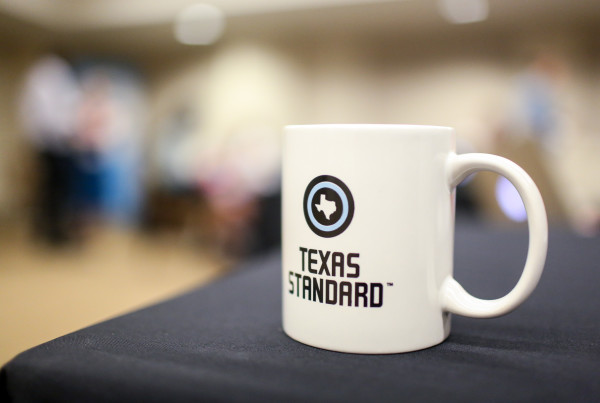In the boxing ring he was known as “Big George.” But today, most people know George Foreman for his business ventures. Foreman has helped sell millions of George Foreman Grills, which were first introduced in 1994 and are still on the market today.
But there’s much more to Foreman’s life. He was born in East Texas and grew up mostly in Houston’s Fifth Ward. Sports historian and professor Andrew R. M. Smith documents Foreman’s path from childhood to boxing to being a pitchman in his new biography, “No Way but to Fight: George Foreman and the Business of Boxing.”
Smith’s is the first biography of Foreman, and he says that was part of the reason he wanted to write it.
“I realized I didn’t really know anything about his first career. [And] I didn’t know why his name was on a grill that I was using to cook on in college,” Smith says.
Foreman became the celebrity spokesperson for the Foreman Grill – a product he didn’t invent, but helped market – just as his boxing career was coming to an end. Before all that, though, Smith says it was Foreman’s childhood in Houston that helped shape him.
“His formative years were in a pretty rough part of a growing city,” Smith says.” You’re talking about crowding a lot of people into a small area that was generally underdeveloped. That was not new in that part of Houston [then], and it certainly hasn’t been remedied even as we’re now into the 2020s.”
Smith says the Fifth Ward was growing as black sharecroppers moved from rural Texas into Houston during World War II, as more defense and shipping jobs became available. But the city was still overtly racially segregated then.
Foreman’s first instance of fame was during the 1968 Olympics in Mexico City. Out of that event came one of the most recognizable images of Foreman, waving the American flag after wining the Gold Medal heavyweight boxing match.
Foreman eventually moved into professional boxing, and defeated Joe Fazier to be heavyweight champion in 1973. But his success is often overshadowed by his loss to Muhammad Ali at the famous “Rumble in the Jungle” match in Zaire – now the Democratic Republic of Congo – in 1974.
Today, George Foreman still lives in the Houston area. And looking back on his boxing legacy, Smith says Foreman helped “clean up” boxing’s image in the ’90s after another champion, Mike Tyson, was convicted and went to prison for rape in 1992.
“Boxing had declined a little bit, and I think George Foreman really helped to bring that sport back into, at least, the American public eye,” Smith says, “and sort of show us a different vision of what a boxer could be and also what an athlete could be.”
The subheading of this story has been updated to reflect that George Foreman is a two-time, not three-time, heavyweight champion.
Written by Caroline Covington.














